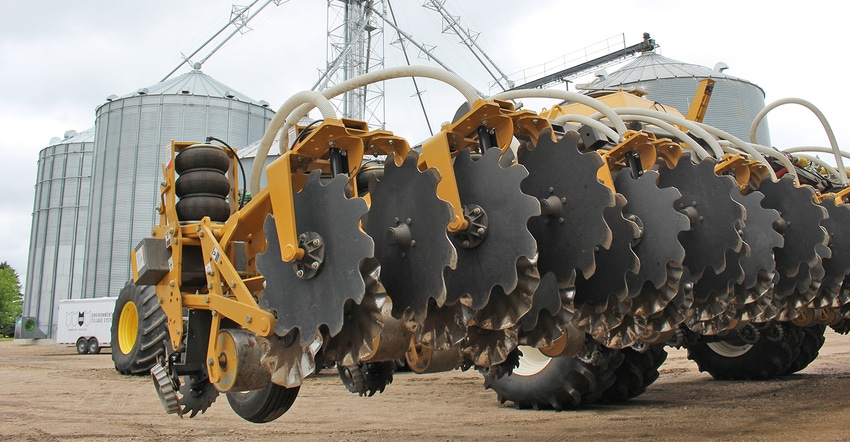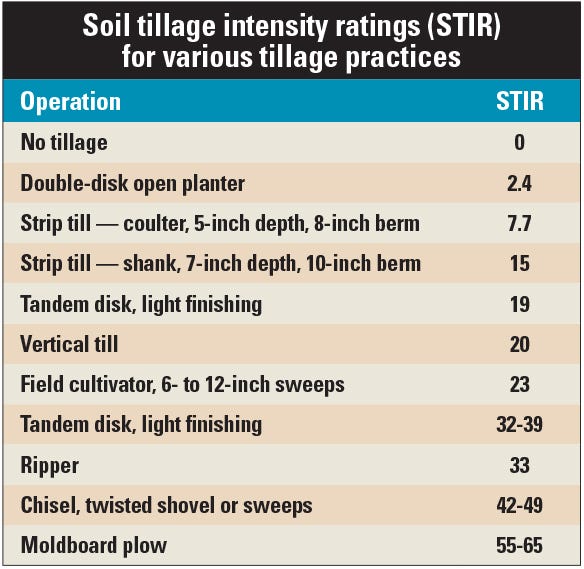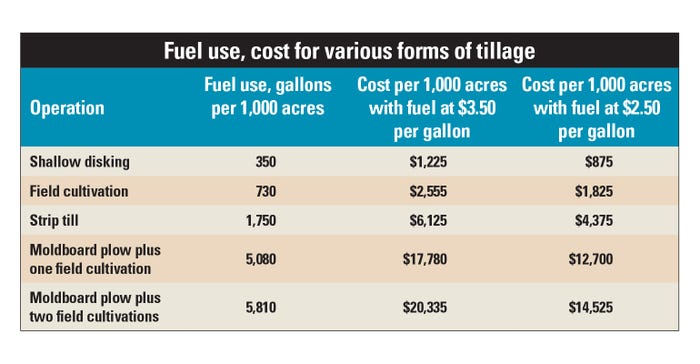
From the tillage beliefs of the English agriculturalist Jethro Tull to the fuel savings documented in Midwest research, expect to learn a touch of history and some solid take-home information in the Upper Midwest Tillage Guide published by the University of Minnesota.
Authors Aaron Daigh, a North Dakota State University soil scientist, and Jodi DeJong-Hughes, a regional U-M Extension educator, started working on the guide in 2015. The two land-grant researchers often share research tillage plots, so it made sense to collaborate on the publication.

A Soil Tillage Intensity Rating (STIR) value of 10 or less is required to qualify for Natural Resources Conservation Service no-till incentive programs. The STIR value is calculated using a computer model that predicts long-term average annual erosion by water and is based on crop management decisions applied in a field. The NRCS assigns a numerical value to each tillage operation. STIR values range from 0 to 200, with lower scores indicating less soil disturbance. Based on STIR values, most strip-till systems can be used to qualify for the NRCS conservation management and no-till incentive programs, according to Jodi DeJong-Hughes, U-M Extension educator. (Source: Jodi DeJong-Hughes)

The 40-page book begins with basics on soil tillage history and research in the first chapter and moves on to what farmers encounter today. The Upper Midwest Tillage Guide was supported, in part, by Minnesota farmers and their corn and soybean checkoff investments.
Chapter 2 describes tillage implements, what they do to the soil, and residue and ideal use.
“This is a good chapter for people who have always been using chisel plow and want to know about other implements available,” DeJong-Hughes says. Teachers, new agronomy consultants, Extension and government faculty also may find it helpful, she adds.
Chapter 3 discusses reducing tillage intensity and the benefits growers may see, such as increased soil structure, organic matter and reduced soil erosion.

Research offers information on various tillage systems in the Upper Midwest Tillage Guide from U-M and North Dakota State University. Here, research from 2015 shows the average soil temperatures taken from thaw to crop canopy closure to a depth of 2 inches below in four tillage systems near Wahpeton, N.D., and Fergus Falls, Minn. (Source: Jodi DeJong-Hughes)

“Changing tillage means a change to the system, from weed management to soil fertility,” DeJong-Hughes says.
Chapter 4 covers research conducted on crop yields and the costs of various tillage systems.
“This chapter would be of most interest to farmers,” DeJong-Hughes says. “They can look at how much equipment costs per acre and the fuel used per acre, for example.
Here are data comparing four tillage practices and their fuel use and equipment costs. Information such as this is available in the Upper Midwest Tillage Guide. (Source: Jodi DeJong-Hughes)

DeJong-Hughes adds that there is not one tillage management system that will work for every field. Factors such as soil moisture and physical characteristics, slope, and crop rotation play a vital role when deciding which implement is best for each field.
“Managed properly, the beneficial aspects of maintaining high levels of crop residue with reduced-tillage systems outweigh the few negative aspects,” she says. “Look at your specific situation to decide what is right for you. In the end, reducing your tillage is key to the long-term productivity of your soil.”
Click on Upper Midwest Tillage Guide to read the book online.
About the Author(s)
You May Also Like






